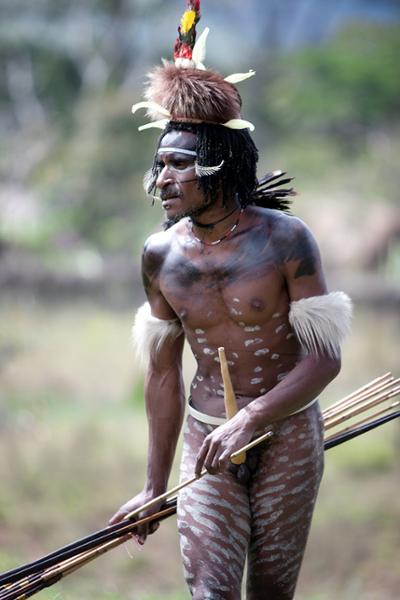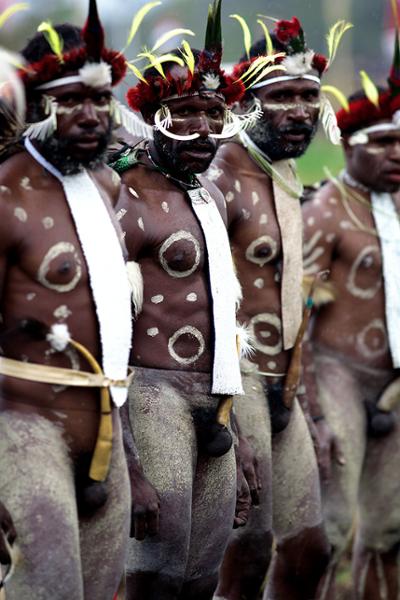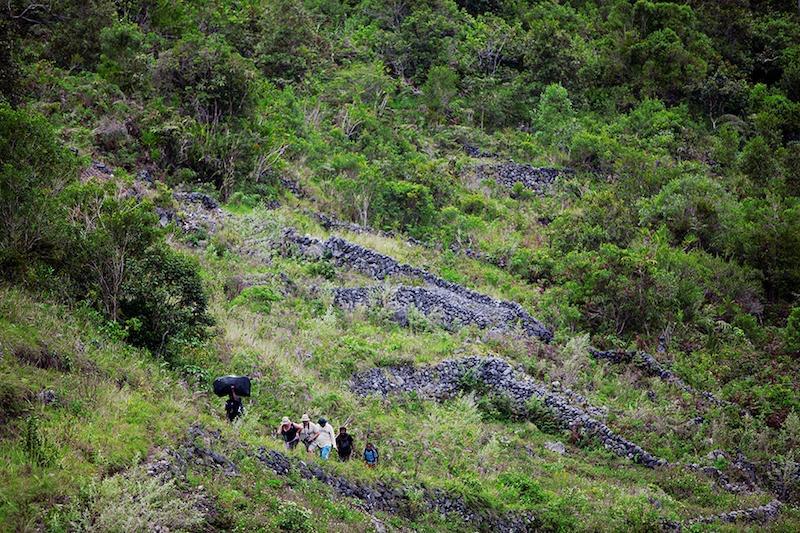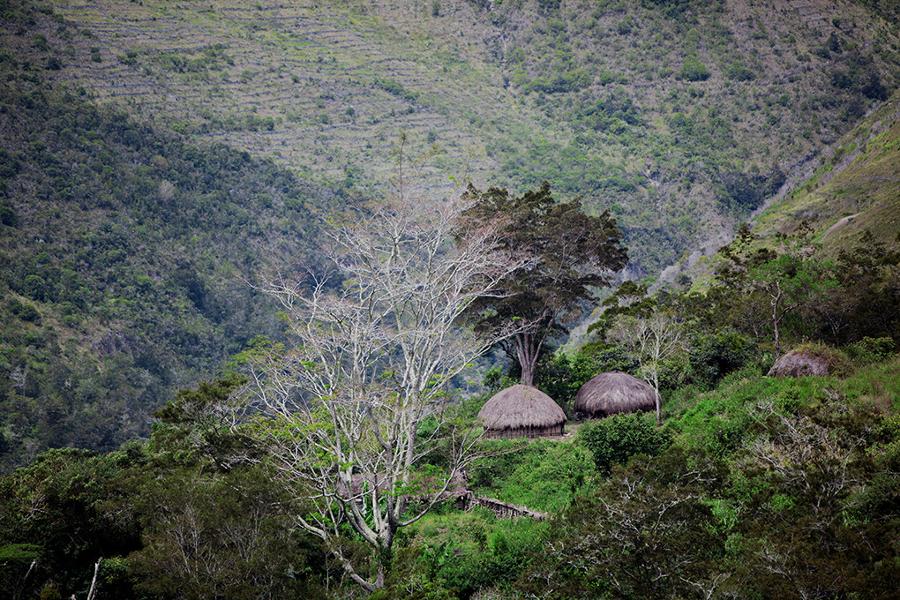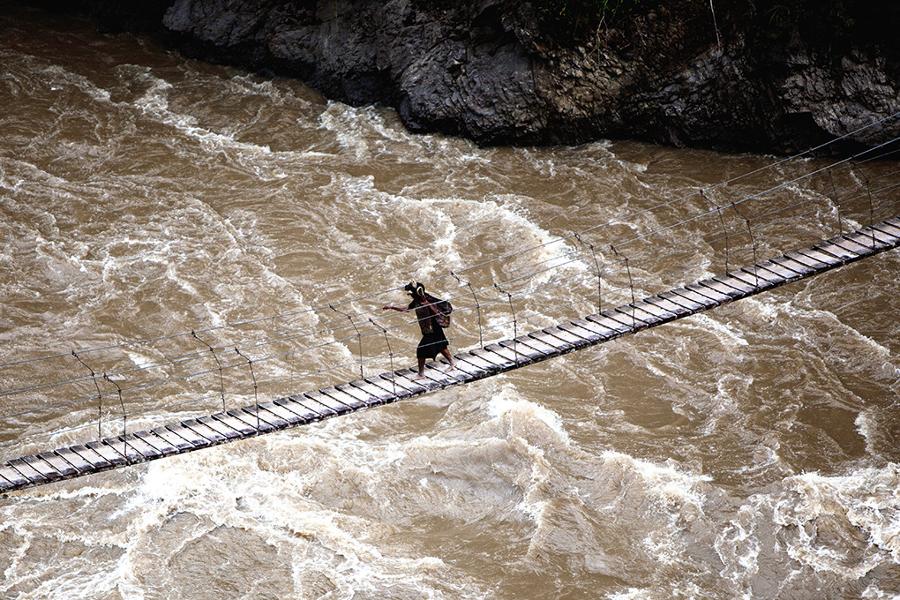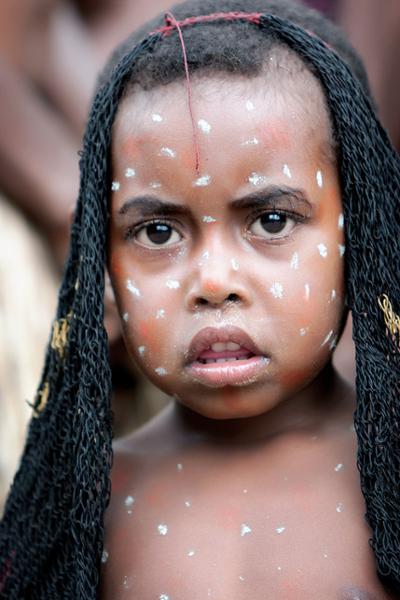
Indonesian Papua: back to the Stone Age
In 1992, as a young photographer and freshly graduated from one of the most renowned Brussels schools, I took the opportunity to quench my thirst for photographic adventures. My very first photo report was therefore carried out in West New Guinea (Indonesia), in order to immortalize the ancestral rites of some Papuan tribes in the highlands of Irian Jaya. These shots will then be spotted by the famous Gamma press agency, which will broadcast them around the world.
The text below is an update of the article I wrote at the time to illustrate the series of photos that the Gamma agency had selected.
One of the last lands of adventure
At a time when modern man has already set foot on the Moon and his spacecraft on other planets in the galaxy, there are still a few places on our good old Earth preserved by Western civilization. New Guinea is indeed one of the last lands where certain areas remain unexplored and where some Papuan peoples still live in the manner of our ancestors from the Polished Stone Age. New Guinea belongs to the Melanesian world and the general morphology of the Papuans, their black or dark brown skin color, a certain way of behaving, moving and laughing are reminiscent of the African continent. Even the shape of the huts and huts refers to Africa.
The origin of these populations remains mysterious. Many historians, however, believe that they arrived in successive waves from southwest Asia, millennia before the Christian era, always progressing south and east to populate distant lands even beyond Australia. There are the pygmoid peoples of the mountains or the northeast coasts, the light-skinned Polyno-Papuas and the Malo-Papuas whose origins date back to the invasion of the Proto-Malays. The traits common to these three entities are characterized firstly by the primacy of the group over the individual, hence belonging to a family; then by absolute respect for ancestral traditions and by conformity in daily life. The act of originality or innovation is thus considered nonsense and leads to exclusion from the group. These are the essential factors in the immobility of these societies over the centuries.
Accelerated leap into the future
In the 1950s, many regions of Papua New Guinea (the eastern part of the island) were still untouched by the White Man, populated by indomitable and warlike tribes. But since then, Australian power and its desire for discovery have pushed civilization forward at a rapid pace. In less than thirty years, these tribes were approached and "pacified", often by force. Irian Jaya, annexed in 1963 by Indonesia, remains less studied and there are still very few roads* allowing travel within the country. Travel is only possible by river or plane. And civilization spreads, like an oil stain, from the missions, but the influence on the natural environment is almost zero. As a result, some territories still remain inaccessible. * The current Indonesian president, Joko Widodo, has undertaken, since taking office in 2014, a vast road construction program, which notably connects the north, center and south of the Papuan province.
Development of tourism since the end of the 1980s
Economic development is also limited to coastal regions and a few valleys, including that crossed by the Baliem River, in the highlands of the former Irian Jaya. This "happy valley" was discovered in 1937 by Richard Archbold and rediscovered by chance in 1945, during the forced landing of an American plane. And, since the end of the 1980s, tourism has grown exponentially in this region, as if the authorities concentrated here everything they prohibited elsewhere. It is a tourism almost exclusively of physical effort and walking, since there is no communication route worthy of the name. And, barely thirty years ago, no one came to Wamena, the only town in the valley, if they did not have a good reason to do so. There are now tourist circuits and local guides are in contact with foreign tour operators.
“Valley of the Cannibals”
Around 100,000 Dani live in the Baliem valley, still called the “valley of the cannibals”. 72 kilometers long, around thirty kilometers wide and perched at an altitude of 1,700 meters, it is still only accessible by plane. Among the 750 tribes (and as many dialects) of Irian Jaya (which means “victorious Irian” in Indonesian), the Dani are certainly the most experienced in agriculture. They practice slash-and-burn cultivation, terracing and perfectly irrigating their fields, protected by simple stone walls. These fields often cling to the steep sides of the mountains, and the slopes are sometimes so steep that the Papuans have to dig with one hand and hold on to the earth with the other. Sweet potato - a sweet variety of potato, ginger, cucumber, sugar cane and banana are the main crops, while pig, practically the only livestock product, has both a sacred function and commercial. He is the central pivot of Papuan life and he is killed in special circumstances, notably during social or religious festivals, during weddings or funerals. Then it is stewed in a dug pit, covered with successive layers of burning stones and various leaves. It is of such great importance that it is common to observe a woman breastfeeding a piglet at the same time as her children. The theft of a pig is, moreover, one of the main reasons for conflict. And, just like the kidnapping of a woman, it could give rise, even fifty years ago, to a headhunt, the aim of which was to appropriate the value of the enemy, who was then eaten. Cannibalism has today disappeared from the Baliem valley, but it is possible that areas of Irian Jaya untouched by civilization and populated by the last cannibals remain. They are located on the border of the highlands and lowlands in the south of the country.
Imposing and hostile nature
Despite temperatures that can drop to 5°C, the Danis live practically naked. The men only wear a simple penis sheath made of dried colocynth (koteka in Papuan) and the women are only girded with short "skirts" made of reed fibers which conceal neither round bellies nor wrinkled breasts. These men and women live in the middle of a hostile nature, made of sharp mountains, lost valleys, tumultuous rivers, rain, mud, fog, cold, cliffs, gigantic chasms, sharp ridges and impassable gorges. And, crawling under tree trunks, climbing piles of rocks slippery with rain, brushing against precipices, stepping over multitudes of obstacles, such is the daily lot of the Dani in this jungle with 700 species of birds (including the famous Paradise), silent, damp and cold, where moss and ferns hide the holes among a totally rotten vegetable mess. The mud is everywhere, sticky... Fortunately the Papuans' wide, flat feet stick to it more! The Danis therefore live in relationship with this imposing and hostile nature, in a very chaotic habitable space. The rugged terrain does not favor trade and low agricultural productivity tends to isolate villages. These are protected by wooden palisades providing one or two entrances. The huts are built of squared logs, separated from each other by spaces of dirt where the pigs run. The entrance to the huts is small and narrow, commensurate with their inhabitants. The term "hamlet" would be better suited, in fact, to these villages which are never very large or very populated.
Communication with the living
And traditional Papuan life often continues in parallel with the new customs and beliefs brought by the whites. The Danis believe, for example, in eternal life, and above all that the dead remain in communication with the living. It is therefore not uncommon to see, in certain villages, ancestors mummified by smoking. And they still use tools and weapons from yesteryear, such as polished black wooden bows, hung with a very flat bamboo blade which is knotted at the ends. The arrows have points of different shapes depending on the use: barbed, diamond, lanceolate, trident, and even round for hunting birds. Without forgetting the axes which also make the Papuans famous. They are composed of a cut and polished stone point, attached to the handle by defibrated liana which was wet during manufacturing and tightens as it dries. The handles are V-shaped pieces of wood with uneven branches that can be worn over the shoulder.
Submission to modern civilization
Despite a certain submission to modern civilization, willingly or by force, and the chance of foreign incursions into the Papuan jungle, only the youngest are really influenced by "white" culture. Because the oldest want to proudly preserve what remains of their ancestral traditions. And all the more so since, in just under fifty years, they suffered an enormous psychological shock by making a terrible leap into the future. And it is certainly the appearance of the Money God which has disconcerted them the most: the frenzy of greed of the Papuans now makes them monetize everything they can, and this frenzy is all the greater as these men are torn between their ancient culture and that from the West. In Papua New Guinea, which is more independent, we are witnessing delinquency which spares neither the towns nor the countryside, terrorized by numerous gangs of thugs. Of course, some Papuans in Irian Jaya rebelled against this inquisition by trying to expel all foreigners from their lands. And the departure of the Australians in 1975, leaving Papua New Guinea free and independent, revitalized their resolve. Many actually wanted to take advantage of the opportunity to create a single Papuan state, by uniting the two territories to the same cultural universe and the same geographical entity, but the Indonesian government did not see it that way. This is how the OPM, the Papuan independence movement, was born, whose survivors had to take refuge in the most inhospitable and uncontrolled areas of the country, after a large number of supporters were exterminated by napalm bombs these last years.
Cultural annihilation
Culturally and socially annihilated, the Papuans are only shadows of themselves. They remain amorphous in the face of the gradual invasion of their territories by Indonesian settlers, driven by an inevitable policy of modernization. Like animals in an immense cage without bars, they are only good at entertaining travelers, and utter their last cry of distress, knowing that they will be unable to do anything as long as they only have spears, bows and arrows to oppose. to the formidable air-to-ground missiles of the Indonesian air force.
And, to the detriment of nature and the indigenous population, mining and oil prospecting plans remain in progress, even if organizations such as Survival International have been able to put a few spokes in the wheels of the Indonesian administration. In short, the Papuans must submit to the new standards of life or disappear. This people, on whom Time seems to have no influence, dies. He's dying and almost no one cares. The West does not have time to deal with the fate of the Papuans. The past is no longer relevant. Unfortunately, a people dies, the sole guardian of the memory of Time. Let us try to preserve this memory.
Dominic CLARISSE
